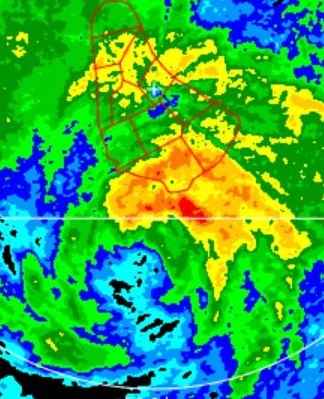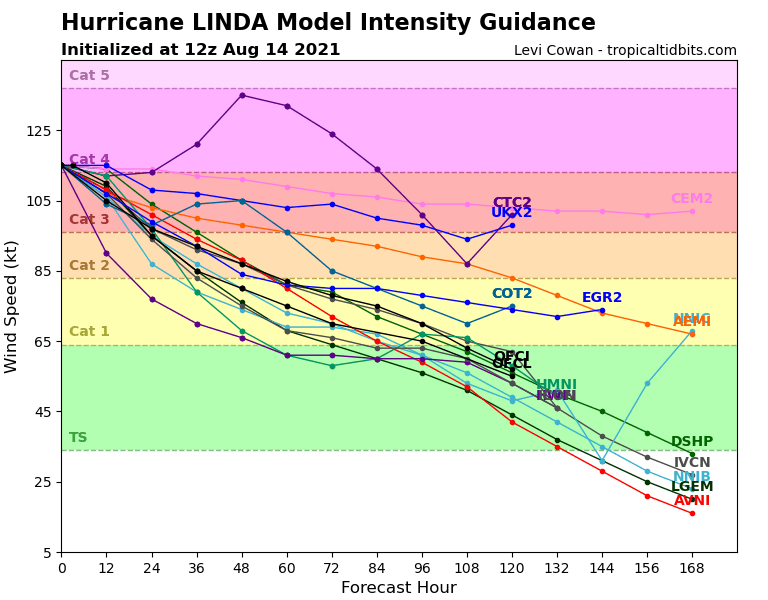Yellow Evan wrote:Yellow Evan wrote:Kingarabian wrote:Storms moving WNW typically have 10kts lower wind speeds in the western and southern quadrants compared to the N/NE. So the 110kt estimate from the NHC might not be too bad.
Yes but the winds on Clarion (idk enough about it's location - elevation? is it exposed? how much of a factor would land friction play?) were not impressive either and I derived the above estimates from the eye pressure.
https://i.imgur.com/OElYSgf.jpg
3m in elevation so wind obs might be a little low but pretty exposed.
Despite exposure, prior to the arrival of the eye the station was reporting maximum sustained winds of ~62 kt from the southeast (90°) at 07:00 UTC. After the passage of the eye the MSW was ~77 kt from the southwest (230°) at 09:00 UTC. The latter observation appears to have been accurate, but the direction of the former seems to have been incorrect, given the fact that Linda was just east-southeast of the station at 07:00 UTC. The lowest MSLP registered was 967.2 mb at 08:00 UTC and coincided with winds of ~13 kt, during which the station encountered the southern portion of Linda’s eye. As a rule MSLP tends to decrease by 1 mb per 10 kt inside the RMW, if I recall correctly, so 967.2 mb coincident with ~13 kt would imply a central pressure of ~965 mb. Given that Linda was moving west-northwestward past Clarion Island, the strongest winds would have been centred north-northeast of the eye, and could have been 20 kt higher than the MSW of ~77 kt observed in the southeastern quadrant. So Linda’s actual intensity around the time of its passage over Clarion Island was likely on the order of 95 kt/965 mb.



















